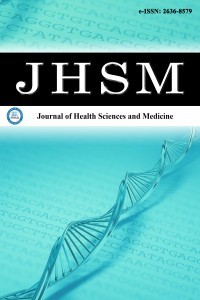1.
Elder JS. Urinary lithiasis. In: Behrman RE, Kliegman RM, Jenson HB, Stanton BF, editors. Nelson textbook of pediatrics. 18th ed. Philadelphia: Saunders. 2008;2267-2272.
2.
Tiselius HG, Ackermann D, Alken P, et al. Guidelines on urolithiasis. In: EAU guidelines. Edition presented at the 16th EAU Congress, Geneva, Switzerland.2001(ISBN 90-806179-3-9).
3.
Modlin M. A history of urinary stone. S <em>Afr Med J.</em> 1980;58:652-655.
4.
Chen L, Zhang J, Shen K, et al. Kidney stones are associated with metabolic syndrome in a health screening population: a cross-sectional study. <em>Transl Androl Urol.</em> 2023;12(6):967.
5.
Demirtaş F, Çakar N, Özçakar ZB, et al. Risk factors for recurrence in pediatric urinary stone disease. <em>Pediatr Nephrol.</em> 2024;1-9.
6.
Xu Z, Yao X, Duan C, Liu H, Xu H. Metabolic changes in kidney stone disease. <em>Front Immunol.</em> 2023;14:1142207.
7.
Taner S, Panahlı K, Ünal A, Ekberli G, Tolunay O. The effect of obesity on metabolic risk factors in children with urinary stones. <em>Pediatr Pract Res.</em> 2023;11(3):101-106.
8.
Öner N, Baştuğ F, Özkan B, Özçatal M, Karakükçü Ç. Urolithiasis in children; the importance of stone localization in treatment and follow-up. <em>Urolithiasis.</em> 2024;52(1):17.
9.
Curhan GC, Rimm EB, Willet WC, Stampfer MJ. Regional variation in nephrolithiasis incidence and prevalence among United States men. <em>J Urol.</em> 1994;151:838-841.
10.
Soucie JM, Thun MJ, Coates RJ, McClellan W, Austin H. Demographic and geographic variability of kidney stones in the United States. <em>Kidney Int.</em> 1994;46:893-899.
11.
Cameron MA, Sakhae K, Moe OW. Nephrolithiasis in children. <em>Pediatr Nephrol</em>, 2005; 20:1587-1592.
12.
Smaldone MC, Corcoran AT, Docimo SG, Ost MC. Endourological management of pediatric stone disease: present status. <em>J Urol.</em> 2009;181:17-28.
13.
Faerber G J. Pediatric urolithiasis. <em>Current Opinion in Urology</em>. 2001;385-389.
14.
National Hemodialysis, Transplantation and Nephrology Registry Report of Turkey, 2008.
15.
Creswell, JW. Mixed-method research: Introduction and application. In: Handbook of educational policy. Academic press, 1999;455-472.
16.
Pelto, Pertti J. What is so new about mixed methods?.<em>Qualitative Health Research</em>. 2015;25(6): 734-745.
17.
Patton MQ. <em>Qualitative Research</em>.2005,New York: John Wiley & Sons, Ltd.
18.
Marshall C, Rossman GB.<em>Designing Qualitative Research.</em> 2014,New York: Sage.
19.
Miller LA, Stapleton FB. Urinary volume in children with urolithiasis. <em>J Urol.</em> 1989;141:918-920.
20.
Ece A, Ozdemir E, Gurkan F, Dokucu AI, Akdeniz O. Characteristics of pediatric urolithiasis in south-east Anatolia<em>. Int J Urol</em>. 2000;7:330-334.
21.
Chen Y, Deng T, Duan X, Zhu W, Zeng G. Percutaneous nephrolithotomy versus retrograde intrarenal surgery for pediatric patients with upper urinary stones: a systematic review and meta-analysis. <em>Urolithiasis.</em> 2019;47(2):189-199.
22.
Matlaga BR, Schaeffer AJ, Novak TE, Trock BJ. Epidemiologic insights into pediatric kidney stone disease. <em>Urol Res.</em> 2010;38(6):453-457.
23.
Sas DJ. An update on the changing epidemiology and metabolic risk factors in pediatric kidney stone disease. <em>Clin J Am Soc Nephrol.</em> 2011;6(8):2062-2068.
24.
Schaeffer AJ, Feng Z, Trock BJ, et al. Medical comorbidities associated with pediatric kidney stone disease. <em>Urology.</em> 2011;77(1):195-199.
25.
Klib M, Ghandour M, Wannous H. Urinary stone disease in Syrian children. <em>Pediatr Nephrol.</em> 2023;38(8):2699-2709.
26.
Kirkali Z, Rasooly R, Star RA, Rodgers GP. Urinary stone disease: progress, status, and needs. <em>Urology.</em> 2015;86(4):651-653.
27.
Spivacow FR, Del Valle EE, Boailchuk JA, et al. Metabolic risk factors in children with kidney stone disease: an update. <em>Pediatr Nephrol.</em> 2020;35(11):2107-2112.
28.
Sarica K. Pediatric urolithiasis: etiology, specific pathogenesis and medical treatment. <em>Urol Res.</em> 2006;34(2):96-101.
29.
Rizvi SAH, Naqvi SAA, Hussain Z, et al. Pediatric urolithiasis: developing nation perspectives. <em>J Urol.</em> 2002;168(4 Pt 1):1522-1525.
30.
Ayyad M, Ayaad O. Measuring quality of life among patients with urinary stone disease: a qualitative study. <em>J Ren Inj Prev.</em> 2022;12(4).
31.
Culhane-Pera KA, Lee M. “Die another day”: a qualitative analysis of Hmong experiences with kidney stones. <em>Hmong Stud J.</em> 2006;7:1-16.
32.
Issler N, Dufek S, Kleta R, et al. Epidemiology of paediatric renal stone disease: a 22-year single centre experience in the UK. <em>BMC Nephrol.</em> 2017;18(1):1-8.
33.
Coward RJM, Peters CJ, Duffy PG, et al. Epidemiology of paediatric renal stone disease in the UK. <em>Arch Dis Child.</em> 2003;88(11):962-965.

